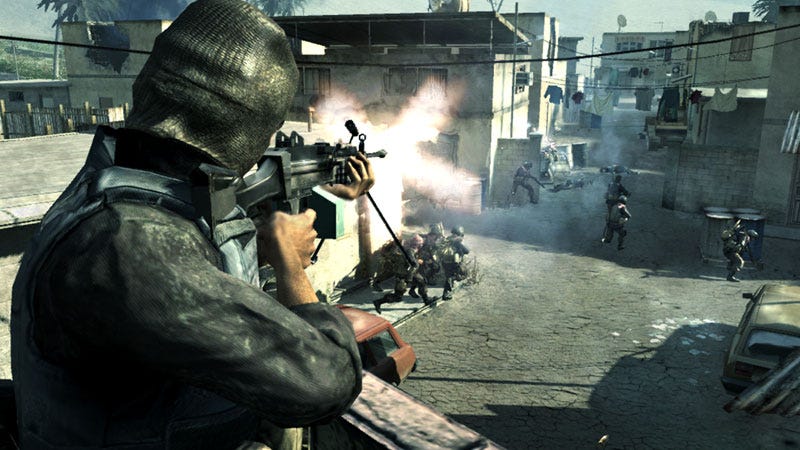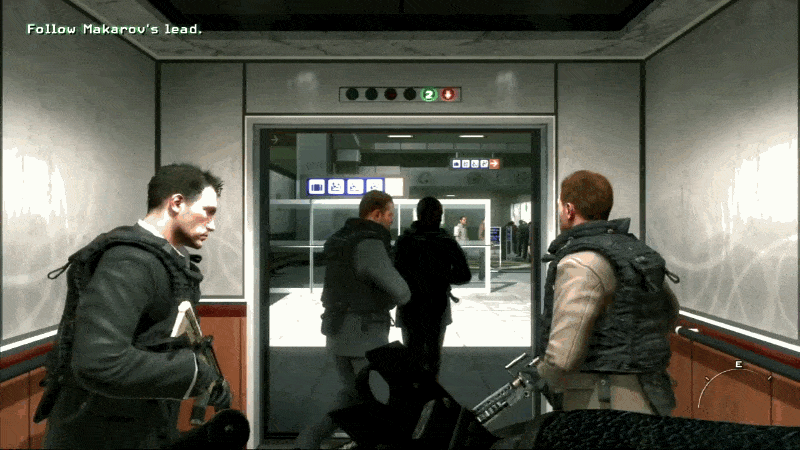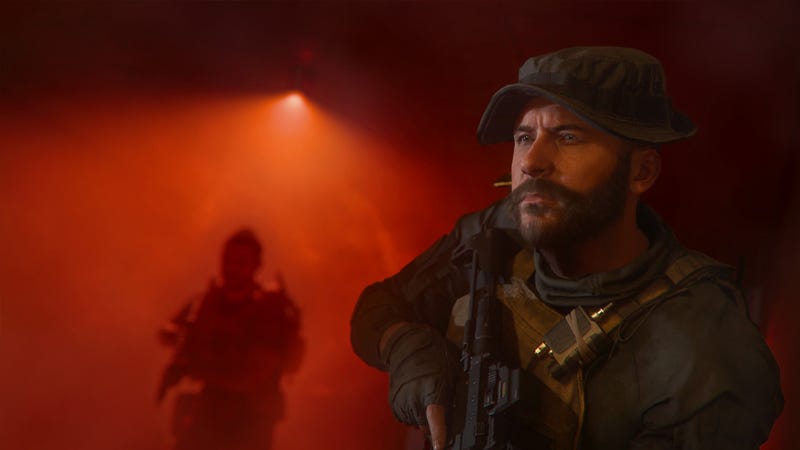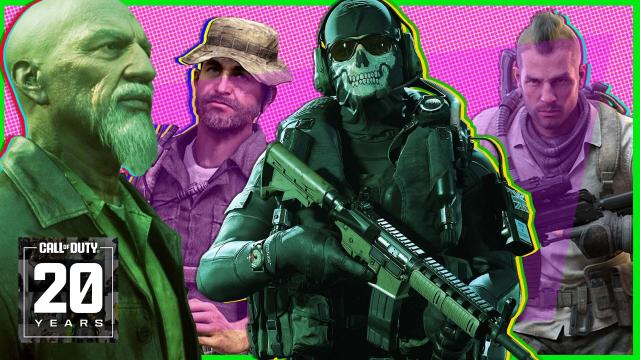The Call of Duty franchise has continually set sales records and delivered rock-solid multiplayer experiences, almost single handedly carrying the first-person shooter genre into the modern era. It remains a crucial pillar in the gaming industry, so much so that Sony and Microsoft were fighting over it in the lead-up to the Xbox giant acquiring Activision, the publisher behind the franchise.
Call of Duty is the kind of game that even non-gamers know about, but the current state of the franchise is confusing. A recent r/Gaming post (which has since been removed by moderators) called the recent Call of Duty cycle “bewildering” thanks to the series’ current naming conventions. For example, a remastered version of Call of Duty 4: Modern Warfare (see on Amazon) came out in 2016; three years later a reimagining/reboot of the franchise-within-the-franchise launched. Its title? Call of Duty: Modern Warfare (see on Amazon). Then there’s the fact that Call of Duty: Modern Warfare 2 (2009) (see on Amazon) and Call of Duty: Modern Warfare II (2022) (see on Amazon) are different games with different stories and content, but Modern Warfare 2 maps are being remade for Modern Warfare III (not Modern Warfare II). So you can see how the entire ordeal has fans scratching their heads.
Read More: The 10 Best Call Of Duty Maps Of All Time
With Modern Warfare III (which is different from 2011’s Modern Warfare 3) set to release on November 10, it’s time to clear up all the confusion.

The original Call of Duty: Modern Warfare trilogy
The first Modern Warfare game was Call of Duty 4: Modern Warfare, which was developed by Infinity Ward and released on November 5, 2007. It was the first game in the Call of Duty franchise set in modern times, as all previous titles focused on World War II. It introduced the now-iconic Task Force 141, including the characters Captain John “Soap” MacTavish and Captain John Price, who are trying to take down a group of Russian Ultranationalists and their associates.
Modern Warfare’s multiplayer served up some of the most iconic maps in the franchise, like Shipment and Crash, and was widely considered a fantastic example of online CoD, an experience on par with titans like Halo 3.
Modern Warfare ended on a bit of a cliffhanger, with Price receiving CPR after being injured in a massive final battle, and the events of that game lead directly into 2009’s Modern Warfare 2 (spoilers: Price lives, and there’s a prison breakout mission where you have to rescue him). The sequel (also developed by Infinity Ward) introduces two now well-known characters: Sergeant Gary “Roach” Sanderson and Lieutenant Simon “Ghost” Riley. The story sort of circles back to what was going on in the original game, with the Ultranationalists taking over Russia and Task Force 141 trying to stop them from committing terror attacks around the world.

Modern Warfare 2 also famously included the controversial campaign mission “No Russian,” which featured a mass shooting in a Moscow airport. Its multiplayer (which included fantastic maps like Highrise and Favela) received praise, though it didn’t stray much from the previous game’s formula.
Finally, in 2011, Activision released Modern Warfare 3, the first in the series co-developed by Sledgehammer Games and Infinity Ward. The campaign picked up directly after the events of the previous game, with the Task Force 141 crew making up the main protagonists yet again. Though the campaign was tight and enjoyable, it was also fairly forgettable.
Multiplayer-wise, MW3 completely reworked Killstreaks to try and make obtaining them more difficult. It also added new game modes, a new co-op mode called Survival, and revamped co-op game mode Spec Ops to increase replayability. At the time, Gamasutra reported that Activision CEO Bobby Kotick called the Modern Warfare 3 launch “the biggest entertainment launch of all time in any medium.”

The rebooted Call of Duty: Modern Warfare trilogy
Here is where things get tricky. After Modern Warfare 2 the Modern Warfare franchise was stagnant for five years, until the release of Call of Duty: Modern Warfare Remastered in 2016. At first, you could only get this remaster (which was developed by Raven Software) if you bought Infinite Warfare, the Infinity Ward-developed chapter which broke with franchise tradition by featuring a more futuristic setting. Modern Warfare Remastered was made available for individual purchase later in 2017 after petitions called for a separate sale.
The remaster featured the same campaign as the original game, with updated graphics, textures, lighting, and similar such tweaks. Multiplayer added a few new game modes that had cropped up after Call of Duty 4’s release.
From there, the future of the Modern Warfare franchise was unclear. Petitions circulated demanding a remaster of Modern Warfare 2, but instead Activision went in an entirely different direction: It released the sixteenth Call of Duty game, dubbed simply Call of Duty: Modern Warfare, in 2019. A reboot of the sub-series, it features a mix of new characters like Alex, Gaz, and Farah alongside fan-favorites from Task Force 141 like Price, Soap, and Ghost, with many returning characters introduced in the post-campaign Spec Ops and multiplayer modes, which continued the main story.

But Activision took a major swing with Modern Warfare’s second season—on March 10, 2020, Warzone debuted as a new battle royale game mode within Modern Warfare. Players could also download and play it for free without buying the 2019 remake, and the free-to-play aspect coupled with the tried-and-true Call of Duty gameplay solidified Warzone as a runaway hit. According to Statista, “within 24 hours of [its] release on March 10, 2020…Call of Duty: Warzone amassed six million active players worldwide. This number grew to surpass 100 million downloads after only 13 months on the market.” And Warzone functioned as another medium through which the Modern Warfare story could continue, revealing the fate of Alex (who was presumed dead in the 2019 remake), and bringing in other characters (mostly villains) from previous Modern Warfare games.
In 2022, Activision released Modern Warfare II, which picks up directly after the events of the previous game. There’s more Task Force 141, a few new faces, and the eventual return, via Spec Ops and multiplayer, of the Call of Duty 4 (the OG Modern Warfare) main baddie, Vladimir Makarov. Since the franchise’s reboot, Call of Duty has been treating its characters and storylines as a sort of video game version of Star Wars—iconic heroes return, but don’t walk the same path, and old villains resurface just when you think they’re gone for good. I wouldn’t necessarily establish a sort of CoD canon (whereby a certain character’s fate in a certain game is considered their true ending), but the franchise’s handling of its core cast across the reboots makes it tempting.
Multiplayer-wise, the sequel introduced a few new game modes (Knockout and Prisoner Rescue), but most notably ushered in the controversial Warzone 2.0, which replaced the original Warzone when it launched on November 19, 2022. Warzone 2.0 introduced a new mode: DMZ, which Kotaku’s Claire Jackson said is “everything shooters should aspire to be.”

Modern Warfare III
And that brings us to the upcoming Modern Warfare III. It’s the first game to break the franchise tradition of alternating sub-genres, as it’s coming out just a year after Modern Warfare II. Kotaku’s Claire Jackson reviewed the campaign if you want to know more. Plus, with MWIII, a Zombies mode is coming to Modern Warfare for the first time ever, and multiplayer will bring back (confusingly) every single map from the original Modern Warfare 2. We know that there’s an execution animation that will let you kill people with weed smoke, and that red dot mini-maps will return (they were controversially cut from Modern Warfare II).
Most importantly, the Modern Warfare III multiplayer beta that took place in early October gave us the best look at what to expect from the game. We saw how extensive weapon selection is (it includes every weapon from II, as well as more than 30 new guns and attachments), how your operators will carry over from the previous game (Nicki Minaj fans, rise up), and got a good look at those revamped classic maps.
Will Modern Warfare III be a hit among long-time fans? It seems poised to be just that, but we won’t know for sure until it drops on November 10 for PlayStation, Xbox, and PC. Whether it’s good or not, here’s hoping we’ve at least helped you understand the franchise’s storied (and confusing) history here today. It’s a lot!
Update 11/05/2023 10:30 a.m. ET: Updated copy to include Modern Warfare III campaign review.

Leave a Reply